Hello folks,
So a recent post I published talked about 1-Way vs 2-way SSL Authentication in some decent detail. We learned that 2-Way “Mutual” SSL Authentication can be used to enforce both parties attempting to communicate securely to provide authenticity. In other words, prove to each other that they are who they say they are. This can be very powerful from a security standpoint, but is it practical? The answer is, yes and no. The constraint comes from the aspect of administration (actually create certificates for each client) and manageability (keep accounting and maintaining actively lists of trusts) with the trade-off of proper authenticity. For example at first administering and managing 10 client certificates may be okay, but then imaging 100, or even a 1,000! So in this post I wanted to approach the idea of utilizing some tools we can use to offload some of this administration and management while maintaining Mutual Authentication with another entity. The idea revolves around one major assumption, users of a particular service (In this case a web-server) reside on a privately controlled and trusted network
My idea is if we have a group of clients residing on an internal privately addressed network, we can use either an F5 LTM or HAProxy to proxy our users’s connections destined for a service that is enforcing 2-Way SSL “Mutual” Authentication. The F5 LTM or HAProxy would perform the 2-Way SSL Mutual Authentication on behalf of each connecting user, eliminating the technical need to generate certificates for each client, while maintaining an element of mutual trust to the end service.
The basic idea is: (notice only our F5 LTM/HAproxy and the web-server perform 2-Way “Mutual” Authentication)
Preliminary Steps:
For the following steps please read my 1-Way vs 2-Way SSL Authentication Post.
-
Create a the web-server’s CSR and Key
root@ca:/opt# openssl req -config openssl-rootca.conf -extensions server_req_ext -new -nodes -newkey rsa:2048 -keyout web-server.key -out web-server.csr -days 365 Generating a 2048 bit RSA private key ................................+++ ............................................................................+++ writing new private key to 'web-server2.key' ----- You are about to be asked to enter information that will be incorporated into your certificate request. What you are about to enter is what is called a Distinguished Name or a DN. There are quite a few fields but you can leave some blank For some fields there will be a default value, If you enter '.', the field will be left blank. ----- Enter Country [US]: State or Province Name (full name) [Connecticut]: Locality Name (eg, city) [Wethersfield]: Organization Name [thejimmahknows]: Unit Name [Test Unit]: Common Name (e.g. server FQDN or YOUR name) []:web-server Contact email for this Certificate [admin@example.com]:
-
Create the F5 & HAproxy Server-Side CSR and Key
root@ca:/opt# openssl req -config openssl-rootca.conf -extensions client_req_ext -new -nodes -newkey rsa:2048 -keyout ha-client1.key -out ha-client1.csr -days 365 Generating a 2048 bit RSA private key ...................+++ .....+++ writing new private key to 'ha-client1.key' ----- You are about to be asked to enter information that will be incorporated into your certificate request. What you are about to enter is what is called a Distinguished Name or a DN. There are quite a few fields but you can leave some blank For some fields there will be a default value, If you enter '.', the field will be left blank. ----- Enter Country [US]: State or Province Name (full name) [Connecticut]: Locality Name (eg, city) [Wethersfield]: Organization Name [thejimmahknows]: Unit Name [Test Unit]: Common Name (e.g. server FQDN or YOUR name) []:ha-client1 Contact email for this Certificate [admin@example.com]:
-
Create the F5 & HAproxy Client-Side (connection the client will actual connect to)
root@ca:/opt# openssl req -config openssl-rootca.conf -extensions server_req_ext -new -nodes -newkey rsa:2048 -keyout virtual-service.key -out virtual-service.csr -days 365 Generating a 2048 bit RSA private key ........................+++ .............................................................+++ writing new private key to 'virtual-service.key' ----- You are about to be asked to enter information that will be incorporated into your certificate request. What you are about to enter is what is called a Distinguished Name or a DN. There are quite a few fields but you can leave some blank For some fields there will be a default value, If you enter '.', the field will be left blank. ----- Enter Country [US]: State or Province Name (full name) [Connecticut]: Locality Name (eg, city) [Wethersfield]: Organization Name [thejimmahknows]: Unit Name [Test Unit]: Common Name (e.g. server FQDN or YOUR name) []:mytestvip Contact email for this Certificate [admin@example.com]:
-
Using our CA from my previous ariticle, sign all three of these certificates
Sign the web-server’s CSR
root@ca:/opt# openssl ca -config openssl-rootca.conf -extensions server_req_ext -in web-server2.csr -out web-server2.crt Using configuration from openssl-rootca.conf Enter pass phrase for /opt/rootCA.key: Check that the request matches the signature Signature ok The Subject's Distinguished Name is as follows countryName :PRINTABLE:'US' stateOrProvinceName :ASN.1 12:'Connecticut' localityName :ASN.1 12:'Wethersfield' organizationName :ASN.1 12:'thejimmahknows' organizationalUnitName:ASN.1 12:'Test Unit' commonName :ASN.1 12:'web-server' Certificate is to be certified until Feb 25 15:10:27 2017 GMT (365 days) Sign the certificate? [y/n]:y 1 out of 1 certificate requests certified, commit? [y/n]y Write out database with 1 new entries Data Base Updated
Sign the F5 & HAProxy Server-Side CSR (This is the connection the F5 makes to our backend pool members)
root@ca:/opt# openssl ca -config openssl-rootca.conf -extensions client_req_ext -in ha-client1.csr -out ha-client1.crt Using configuration from openssl-rootca.conf Enter pass phrase for /opt/rootCA.key: Check that the request matches the signature Signature ok The Subject's Distinguished Name is as follows countryName :PRINTABLE:'US' stateOrProvinceName :ASN.1 12:'Connecticut' localityName :ASN.1 12:'Wethersfield' organizationName :ASN.1 12:'thejimmahknows' organizationalUnitName:ASN.1 12:'Test Unit' commonName :ASN.1 12:'ha-client1' Certificate is to be certified until Feb 25 15:12:16 2017 GMT (365 days) Sign the certificate? [y/n]:y 1 out of 1 certificate requests certified, commit? [y/n]y Write out database with 1 new entries Data Base Updated
Sign the F5 & HAProxy Client-Side CSR (This is the connection our users will connect to, the VIP)
root@ca:/opt# openssl ca -config openssl-rootca.conf -extensions server_req_ext -in virtual-service.csr -out virtual-service.crt Using configuration from openssl-rootca.conf Enter pass phrase for /opt/rootCA.key: Check that the request matches the signature Signature ok The Subject's Distinguished Name is as follows countryName :PRINTABLE:'US' stateOrProvinceName :ASN.1 12:'Connecticut' localityName :ASN.1 12:'Wethersfield' organizationName :ASN.1 12:'thejimmahknows' organizationalUnitName:ASN.1 12:'Test Unit' commonName :ASN.1 12:'mytestvip' Certificate is to be certified until Feb 25 15:15:09 2017 GMT (365 days) Sign the certificate? [y/n]:y 1 out of 1 certificate requests certified, commit? [y/n]y Write out database with 1 new entries Data Base Updated
-
Configure Apache web-server to enforce the 2-Way “Mutual” Authentication
Apache Config from previous post.
root@web-server:/opt# vi /etc/apache2/sites-available/default.conf Listen 443 <VirtualHost *:443> DocumentRoot "/var/www/" SSLEngine on SSLCACertificateFile /opt/rootCA.crt SSLCertificateFile /opt/web-server.crt SSLCertificateKeyFile /opt/web-server.key SSLCARevocationFile /opt/rootCRL.crl SSLStrictSNIVHostCheck on SSLVerifyClient require SSLVerifyDepth 1 # Allows PHP to read Certificate info SSLOptions +stdEnvVars LogFormat "%h %l %u %t \"%r\" %>s %b \"%{Referer}i\" \"%{User-Agent}i\"" combined CustomLog "/tmp/access.log" combined ErrorLog "/tmp/error.log" </VirtualHost>Restart Apache
root@web-server:/opt# service apache2 restart
For Troubleshooting create this index.php file
<?php echo "Date = " . date('Y-m-d H:i:s') . "<br>"; echo "Client Cert = " . $_SERVER['SSL_CLIENT_S_DN_CN'] . "<br>"; echo "Server Cert = " . $_SERVER['SSL_SERVER_S_DN_CN'] . "<br>"; echo "Server Serial = " . $_SERVER['SSL_SERVER_M_SERIAL'] . "<br>"; ?>
Masking with F5 LTM:
-
Importing Certificates
-
Create the SSL Profiles
-
Create the Server Pool
-
Create the Virtual Server aka VIP
-
Test by using Chrome to connect to our virtual-service
-
Certificate revocation
- Revoke the ha-client1.crt (The certificate the F5 authenticates with when connecting to the web-server)
root@ca:/opt# openssl ca -config openssl-rootca.conf -revoke ha-client1.crt -crl_reason keyCompromise Using configuration from openssl-rootca.conf Enter pass phrase for /opt/rootCA.key: Revoking Certificate 1005. Data Base Updated
- Re-generate the CRL
root@ca:/opt# openssl ca -config openssl-rootca.conf -gencrl -out rootCRL.crl Using configuration from openssl-rootca.conf Enter pass phrase for /opt/rootCA.key: root@ca:/opt# openssl crl -noout -text -in rootCRL.crl Certificate Revocation List (CRL): Version 2 (0x1) Signature Algorithm: sha256WithRSAEncryption Issuer: /C=US/ST=Connecticut/L=Wethersfield/O=thejimmahknows/OU=Test Unit/CN=MyRootAuthority/emailAddress=admin@example.com Last Update: Feb 26 18:42:33 2016 GMT Next Update: Mar 27 18:42:33 2016 GMT CRL extensions: X509v3 Authority Key Identifier: keyid:E3:A6:FD:69:23:0A:25:AF:7B:77:7A:B8:03:0B:B6:8A:CF:F2:B2:B8 Authority Information Access: CA Issuers - URI:http://ocsp.thejimmahknows.com/rootCA.crt X509v3 CRL Number: 4100 Revoked Certificates: Serial Number: 1003 Revocation Date: Jan 16 18:55:22 2016 GMT Serial Number: 1005 Revocation Date: Feb 26 18:38:04 2016 GMT CRL entry extensions: X509v3 CRL Reason Code: Key CompromiseNotice the Serial Number 1005 is revoked in the CRL file now.
- Replace the rootCRL.crl file on the web-server and restart Apache
scp /opt/rootCRL.crl root@web-server:/opt/rootCRL.crl root@web-server:/opt# service apache2 restart
- Test using the virtual-service VIP on the F5 again.
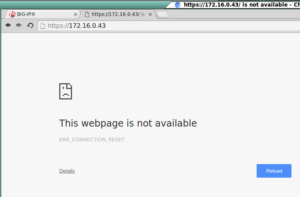
- Revoke the ha-client1.crt (The certificate the F5 authenticates with when connecting to the web-server)
Masking with HAProxy:
If you are unfamiliar with HAProxy, I recommend checking out my article on setting up HAProxy. Or my articles on using HAProxy as a F5 LTM replacement.
- Before we being, we have to generate and sign another certificate and key because we revoked the ha-client.crt perviously.
root@ca:/opt# openssl req -config openssl-rootca.conf -extensions client_req_ext -new -nodes -newkey rsa:2048 -keyout ha-client2.key -out ha-client2.csr -days 365 Generating a 2048 bit RSA private key .+++ ....................................+++ writing new private key to 'ha-client2.key' ----- You are about to be asked to enter information that will be incorporated into your certificate request. What you are about to enter is what is called a Distinguished Name or a DN. There are quite a few fields but you can leave some blank For some fields there will be a default value, If you enter '.', the field will be left blank. ----- Enter Country [US]: State or Province Name (full name) [Connecticut]: Locality Name (eg, city) [Wethersfield]: Organization Name [thejimmahknows]: Unit Name [Test Unit]: Common Name (e.g. server FQDN or YOUR name) []:ha-client2 Contact email for this Certificate [admin@example.com]:
And Sign it
root@ca:/opt# openssl ca -config openssl-rootca.conf -extensions client_req_ext -in ha-client2.csr -out ha-client2.crt Using configuration from openssl-rootca.conf Enter pass phrase for /opt/rootCA.key: Check that the request matches the signature Signature ok The Subject's Distinguished Name is as follows countryName :PRINTABLE:'US' stateOrProvinceName :ASN.1 12:'Connecticut' localityName :ASN.1 12:'Wethersfield' organizationName :ASN.1 12:'thejimmahknows' organizationalUnitName:ASN.1 12:'Test Unit' commonName :ASN.1 12:'ha-client2' Certificate is to be certified until Feb 25 19:47:40 2017 GMT (365 days) Sign the certificate? [y/n]:y 1 out of 1 certificate requests certified, commit? [y/n]y Write out database with 1 new entries Data Base Updated
- Copy All 3 certificates to our HAProxy server
root@ca:/opt# scp virtual-service.* root@172.16.0.44:/opt/ root@ca:/opt# scp ha-client2.* root@172.16.0.44:/opt/ root@ca:/opt# scp rootCA.crt root@172.16.0.44:/opt/
- We need to chain the virtual-service certificate with the root CA certificate for HAProxy to accept it. (For help reference this)
root@test-haproxy:/opt# cat virtual-service.key >> virtual-service-chain.pem root@test-haproxy:/opt# cat virtual-service.crt >> virtual-service-chain.pem root@test-haproxy:/opt# cat rootCA.crt >> virtual-service-chain.pem
And ha-client2
root@test-haproxy:/opt# cat ha-client2.key >> ha-client2.pem root@test-haproxy:/opt# cat ha-client2.crt >> ha-client2.pem
- Edit your haproxy.conf file to match
global log /dev/log local0 log /dev/log local1 notice chroot /var/lib/haproxy stats socket /run/haproxy/admin.sock mode 660 level admin stats timeout 30s user haproxy group haproxy daemon # Default SSL material locations ca-base /etc/ssl/certs crt-base /etc/ssl/private # Default ciphers to use on SSL-enabled listening sockets. # For more information, see ciphers(1SSL). This list is from: # https://hynek.me/articles/hardening-your-web-servers-ssl-ciphers/ ssl-default-bind-ciphers ECDH+AESGCM:DH+AESGCM:ECDH+AES256:DH+AES256:ECDH+AES128:DH+AES:ECDH+3DES:DH+3DES:RSA+AESGCM:RSA+AES:RSA+3DES:!aNULL:!MD5:!DSS ssl-default-bind-options no-sslv3 tune.ssl.default-dh-param 2048 defaults log global timeout connect 5000 timeout client 50000 timeout server 50000 errorfile 400 /etc/haproxy/errors/400.http errorfile 403 /etc/haproxy/errors/403.http errorfile 408 /etc/haproxy/errors/408.http errorfile 500 /etc/haproxy/errors/500.http errorfile 502 /etc/haproxy/errors/502.http errorfile 503 /etc/haproxy/errors/503.http errorfile 504 /etc/haproxy/errors/504.http frontend vs_172.16.0.44_443 bind 172.16.0.44:443 ssl crt /opt/virtual-service-chain.pem default_backend pool_test2waySSL backend pool_test2waySSL server testweb01 172.16.0.25:443 ssl verify required ca-file /opt/rootCA.crt crt /opt/ha-client2.pem - Success!!

- Revocation test
- Revoke and re-generate the rootCRL.crl file
root@ca:/opt# openssl ca -config openssl-rootca.conf -revoke ha-client2.crt -crl_reason keyCompromise Using configuration from openssl-rootca.conf Enter pass phrase for /opt/rootCA.key: Revoking Certificate 1007. Data Base Updated
And re-generate the CRL
root@ca:/opt# openssl ca -config openssl-rootca.conf -gencrl -out rootCRL.crl Using configuration from openssl-rootca.conf Enter pass phrase for /opt/rootCA.key:
- Reload Apache on our web-server to pick up the new CRL file
root@web-server:/opt# service apache2 restart
- Now we test….

- Revoke and re-generate the rootCRL.crl file

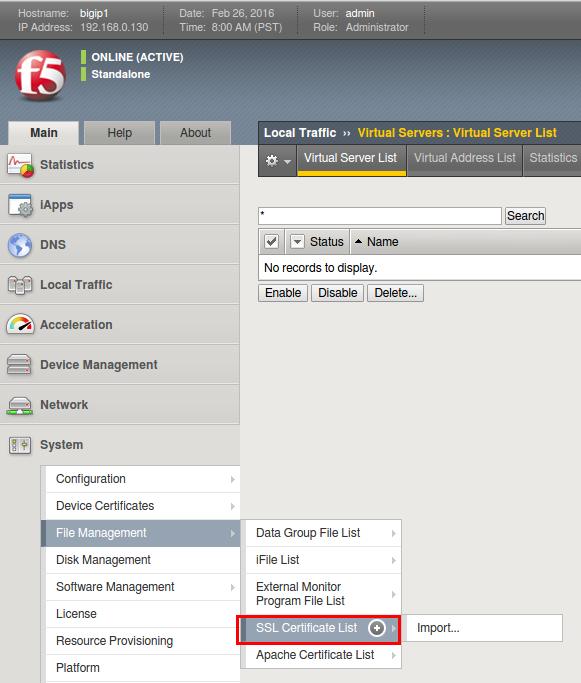
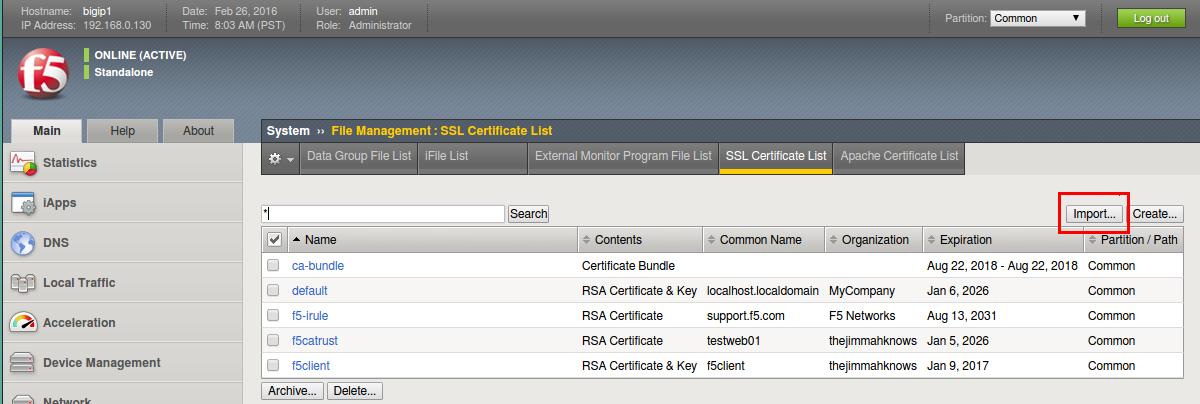
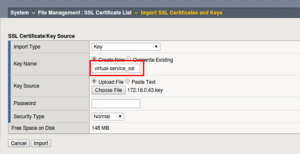

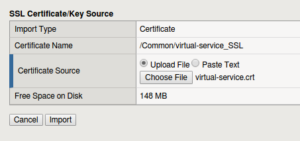
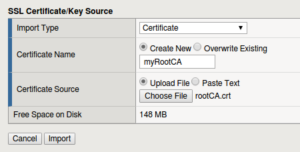
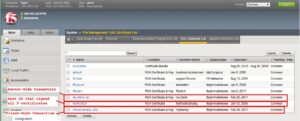
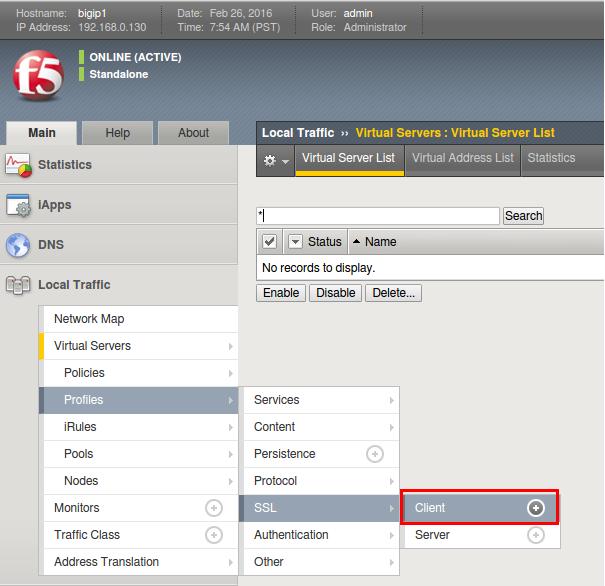
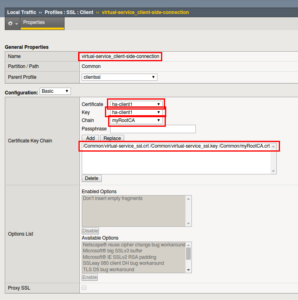
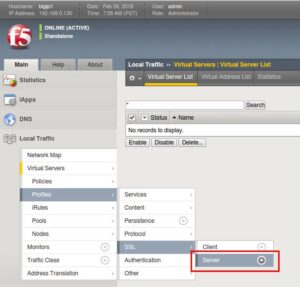
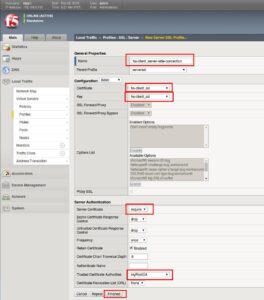
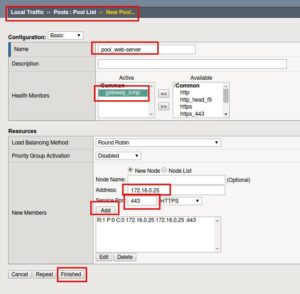
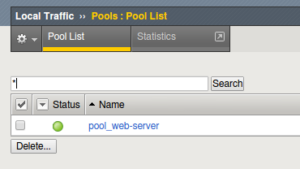
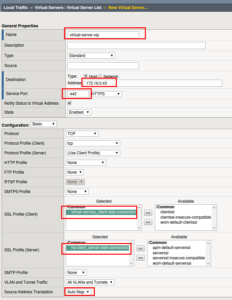
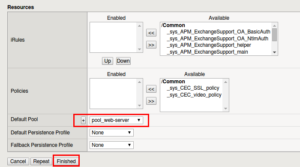

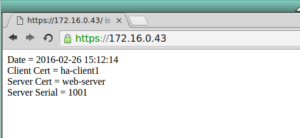

Yet another comprehensive article on 2 way SSL, not many people understand and know how to make it work, thanks